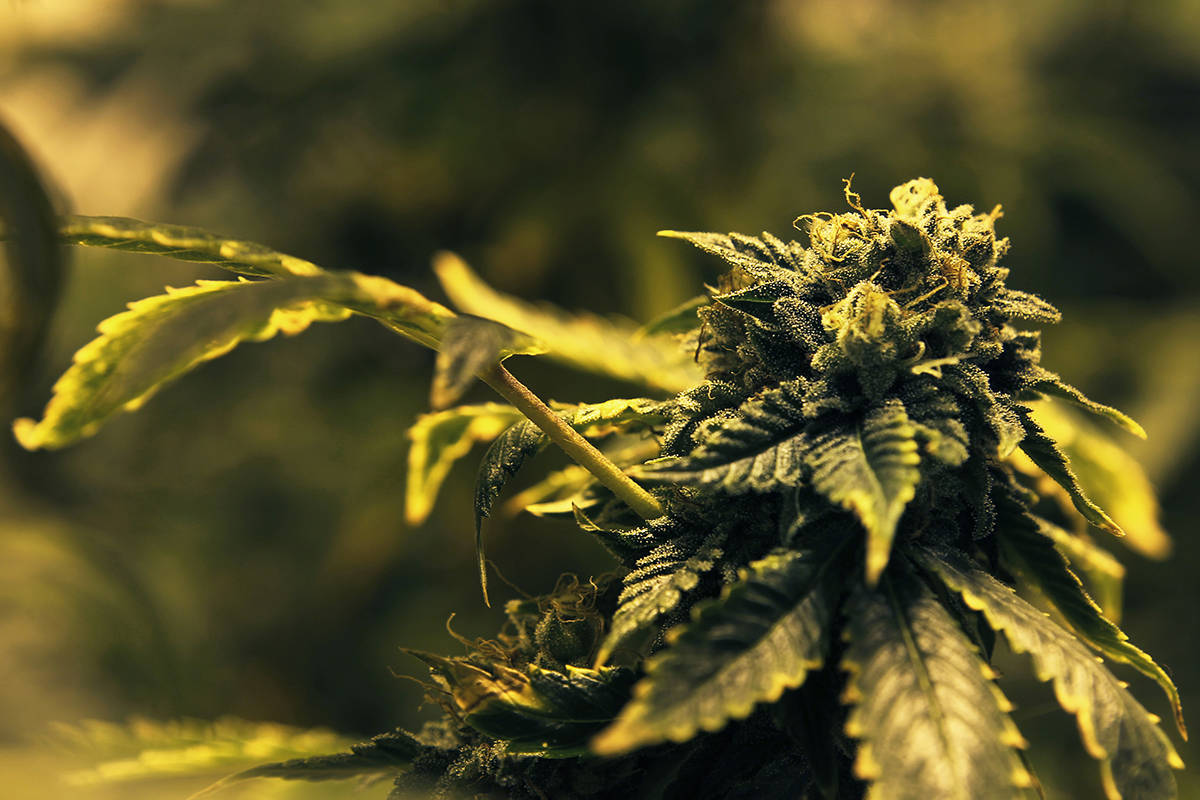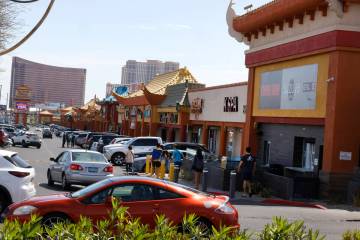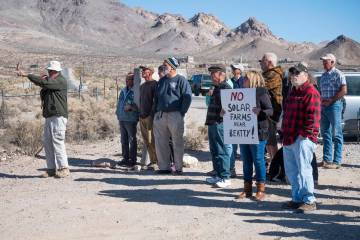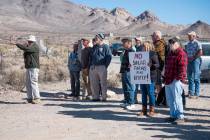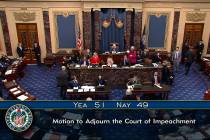After strong start, hemp farming in Nevada trying to find footing
CARSON CITY — After immense growth in 2019, Nevada’s hemp industry is still searching for its footing amid the fallout from a change in federal law.
The number of certified growers in Nevada was cut nearly in half from 2019 to 2020, from 216 to 116, and the acreage of planted hemp fell by nearly 68 percent, down to roughly 1,600 acres, according to the Nevada Department of Agriculture.
“It ain’t no get-rich-quick scheme anymore,” Pahrump hemp grower Jim McCoy said.
The federal government gave the industry a green light when it passed the 2018 farm bill and authorized widespread growth of the plant, and Nevada farmers moved quickly to tap into the booming market of products containing CBD, the nonintoxicating compound found in cannabis plants.
The number of hemp growers in Nevada, where the industry was already legal under a limited pilot program, jumped from 115 to 216 in one year, while the total acreage of hemp planted more than quadrupled from 2018 to 2019, from 1,128 acres to 4,917.
But that federal law also meant that farmers across the country could start growing, too. And grow they did.
Before the 2018 farm bill, the U.S. had roughly 32,000 acres of hemp planted. By the end of 2019, that number had shot up to 146,000, according to data from the U.S. Department of Agriculture.
That saturation of hemp products into the market sent the prices into a free fall. Prices of hemp biomass, essentially the whole plant chopped up, dropped nearly 80 percent from April 2019 to April 2020, from $38 per pound to just $8.10 per pound, according to a report from Hemp Industry Daily, which covers the hemp industry.
Now, farmers appear to be jumping off the hemp wagon.
McCoy had grown hemp outdoors in Amargosa Valley previously, but this year he moved to growing hemp exclusively in smaller amounts in his indoor greenhouse, a common trend among the shrinking number of hemp growers in Pahrump, McCoy said.
“What we saw happen here, especially in Pahrump, is people were taking their life savings, spent it all growing and ended up with nothing,” McCoy said.
Despite the growing pains, some optimism remains for the industry’s future in Nevada.
Beyond CBD
To most, the hemp plant might look a lot like a marijuana plant. And there’s good reason for that: The two are essentially the same plant, cannabis sativa.
The difference between them lies in THC potency. To be considered hemp, the plants must be less than 0.3 percent THC, the psychoactive compound that causes the “high” sensation in marijuana.
There’s another key difference, too. Hemp is legal, but the federal government still considers marijuana an illicit controlled substance. Because of that, hemp commerce can cross state lines, further increasing the competition for growers in the Silver State.
Hemp takes less water to grow than some of Nevada’s major crops, such as alfalfa, giving rise to the idea that it could become a cash crop in Nevada’s semi-arid climate.
“It does take less water, but it still takes water and it depends on the soil,” said M.L. Robinson, an associate professor and horticulture specialist at the University of Nevada, Reno Extension in Las Vegas.
“It’s not a cactus or a creosote bush,” he added.
Robinson and his colleagues are researching best practices for growing hemp and studying which strains of the plant thrive best in the desert, with the hope of helping make hemp a major industry in Nevada.
That includes looking at indoor versus outdoor growing and whether the plant can be grown as alternatives to other crops, such as cotton, which is grown prominently in Arizona and requires more water and more chemicals to grow than hemp.
CBD is the largest driver of the hemp market. But CBD production is just one of a vast variety of uses that are starting to be realized, with foods like hemp seeds and milk, clothes and other fabrics made from the plant’s stalk and even building material like hempcrete, a lightweight, concrete-like material often used in non-weight-bearing insulation walls.
Potential problems ahead
Robinson is optimistic about the industry, but both he and McCoy pointed to upcoming regulatory changes that could further dampen the industry’s growth.
Under a newly proposed regulation from the Department of Agriculture, growers who have three violations in a five-year period because their hemp crops tested above 0.5 percent THC will have their growing certificate revoked for five years.
The local regulation is being put in place as part of a requirement from the USDA’s interim final rules on hemp growing. Audrey Blondfield, Nevada’s hemp program coordinator, said it’s the department’s understanding that growers would receive only one violation if multiple crops at a single growing site test above that threshold.
In 2019, the department tested 430 sample hemp crops, and 56 of those came back above the 0.3 percent threshold to be considered hemp, while 28, or 6.5 percent of all crops tested, came back above 0.5 percent.
“We understand industry concerns regarding this rule, and we are working hard to ensure our hemp program meets federal mandates while also remaining adaptable to our state’s needs,” Blondfield said, adding that the rule was written to be flexible in case the federal government adopts more lenient regulations.
But for Robinson and the university, which is certified to grow the same as farmers, that rule leaves little room to experiment as they look into which strains and strain combinations will grow best in Nevada while meeting hemp’s strict THC requirements.
Despite the price drops, the dip in hemp growing and the increasing regulations, Robinson still sees a future for hemp in Nevada.
Robinson envisions a time when hemp growing can be a bit of a “cottage industry,” where people grow their own hemp plants to make herbal salves, balms or other hemp-based products.
“I think that it has potential, or I wouldn’t be working with the hemp industry,” Robinson said. “But I think we have to look at it as what kind of hemp products or crops are we going to grow here and get off the bandwagon from growing for just one type of product in CBD. There’s thousands and thousands of products that you can develop with it.”
Contact Capital Bureau Chief Colton Lochhead at clochhead@reviewjournal.com. Follow @ColtonLochhead on Twitter.



